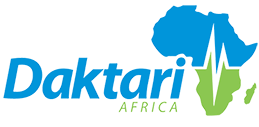Categories
Cost-Effectiveness of Strategies to Reduce Sudden Death in Young Athletes
A strategy based on ECG results alone with cardiology referral only for athletes with abnormal results is cost-effective.
Some experts believe that routine screening of all athletes with electrocardiogram (ECG) before athletic participation will avert many cases of sudden cardiac death (SCD), but others caution that evidence for the cost-effectiveness and feasibility of this approach is lacking.
National Institute of Health investigators used mathematical modeling to compare the following three strategies to reduce SCD in young athletes: 1) History and physical exam, with cardiology referral and ECG for athletes with suspicious findings (current practice) 2) History and physical exam, with ECG for athletes with negative history and physical, and direct cardiology referral for athletes with positive history, physical, or ECG 3) History, physical, and ECG for all athletes, with cardiology referral only for those with ECG abnormalities
The modeling factored in the effect of false-positive (e.g., unnecessary restriction from sports) or false-negative (preventable deaths) results, the effect of reclassification of false positives on subsequent testing, the sensitivity and specificity of ECG and cardiology evaluations, the cost of tests, the relative risk for SCD in athletes with undetected cardiac problems (base assumption, 2.5 cases per 1000 persons), and the prevalence of heart disease in the general population (base assumption, 1 case per 1000 persons).
Compared with current practice, strategy 2 added US$117 per athlete screened, averted 131 additional deaths ($900,000 per case), and cost $68,800 per quality-adjusted life year (QALY). Strategy 3 averted 127 deaths ($600,000 per case) and cost $37,700 per QALY.
Strategy 2 drops below the generally accepted cost-effectiveness cutoff of $50,000 per QALY if the true prevalence of heart disease is 1.45 cases per 1000 or if the relative risk for death in athletes compared to nonathletes is 3.0. Strategy 3 rises above the $50,000 threshold if the prevalence of disease is only 0.75 cases per 1000 or if the relative risk for death in athletes falls below 2.1.
The cost-effectiveness of each strategy was highly sensitive to the specificity of ECG and cardiology evaluations, with small changes in the false-positive rate (3%–5%) affecting the model outcomes.
Comment: A randomized, controlled trial of ECG testing in athletes is unlikely. This economic model suggests that augmenting history and physical with ECG for athletes with negative findings and cardiology referral for those with positive findings on history, exam, or ECG (strategy 2) is not cost-effective, primarily because of the high rate of false-positive results associated with the history, physical, and ECG. You may wonder, then, why the authors retained the history and physical in strategy 3.
They argue (and I agree) that even if we only use ECG findings to determine which athletes require further evaluation, the history and physical exam provide benefits beyond screening for sudden cardiac death, including opportunities to deliver adolescent preventive services (e.g., immunizations, counseling about healthy behaviors, and risk reduction counseling as indicated).
— Alain Joffe, MD, MPH, FAAP Published inJournal Watch Pediatrics and Adolescent MedicineAugust 1, 2012
